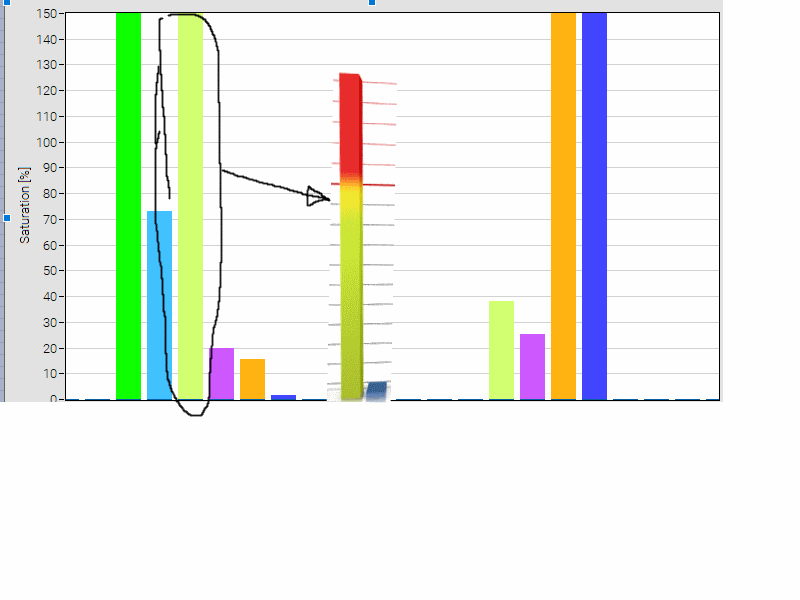-
Posts
1,198 -
Joined
-
Last visited
-
Days Won
112
Content Type
Profiles
Forums
Downloads
Gallery
Everything posted by Neil Pate
-
I am troubled by the size on disk of some of my .lvclass files. I have done the usual things like pruning up the mutation history, however there are still some things bugging me. What is NI.LVClass.FlattenedPrivateDataCTL and why is it so big? I have a class which just consists of a bunch of clusters (sure it gets a bit nested but nothing crazy) and this field is nearly 60k characters long What is NI.ClassItem.ConnectorPane" Type="Bin"> This field seems much bigger than I would expect, the data does not seem to match the name...There is one of these for each method VI and some of these can be 2k characters long. Any ideas?
-

LabVIEW 2017 Dynamic Event Registration Behaviour
Neil Pate replied to ShaunR's topic in LabVIEW Bugs
Slightly off topic, but the other day I opened a version of LV I have not used in ages, I think it was 8.5 (maybe it was 2009) and was blown away by the speed of the IDE. -

LabVIEW 2017 Dynamic Event Registration Behaviour
Neil Pate replied to ShaunR's topic in LabVIEW Bugs
I am just surprised ShaunR is using a version of LabVIEW newer than 2009 -

Thoughts on Launching actors from non root actor code
Neil Pate replied to A Scottish moose's topic in LabVIEW General
After making the switch to all "modules" launched dynamically about five years ago I really cannot imagine now not using my home grown "actor framework" for all projects, regardless of their size. There is just so much good stuff I would have to recode. I cannot speak for the actual Actor Framework though; I never really liked the architecture enough to invest the time in. However watching it from the wings for the last seven or eight year has not really made me think I made the wrong decision. -

Displaying a transparent PNG programatically
Neil Pate replied to Neil Pate's topic in Development Environment (IDE)
Awesome, works perfectly! Thank you so much. -

Displaying a transparent PNG programatically
Neil Pate replied to Neil Pate's topic in Development Environment (IDE)
Thanks for the suggestions; I have used BitMan in the past to do some image scaling. However in this case I am not sure it is going to help me as my background image is "static" i.e. pasted into the FP background. -
I have a customer logo, a PNG with a transparent background and I wish to programatically display it on a FP which also happens to have a picture (static) pasted into the background. I have tried to use a native 2D picture control and also a .net Picturebox but cannot get the logo displaying nicely with proper transparency. This is all a bit deja-vu for me as I struggled with a similar issue some years ago however none of those techniques seemed to do the trick now. All the forum posts seem to indicate this is quite a tricky thing to get right. Any ideas?
-
Not too sure what is going on, will take a look when I get a moment (probably not before Sunday).
-
Bingo! Thanks James
-
Hi James, Thanks for your fantastic work here. Do you have any idea how (if) I can create an enum like this? The bit I am struggling with is upside down triangle decal on the right-hand side. I cannot seem to get it in the right layer that will allow the user to click there. I tried customising one of your flatline controls, and I can replace your small triangle with my desired one, but then as soon as I change the fill colour to anything other than transparent it covers the decal. Any tips?
-

Possible bug with search 1D array of refnum
Neil Pate replied to Dan Press's topic in LabVIEW General
Bump, confirmed this LabVIEW "feature" is still around in LV2015. This is quite strange behaviour if you are not expecting it. I came across this bug when dealing with clones, all my refnums are unique, but when I search it matches the first clone in the array rather than my actual refnum. The workaround of casting still works fine. -
To goal is to recreate StarControl II Super-melee, implemented entirely in LabVIEW (except some drawing and other gfx trickery). Long way to go but gotta start somewhere.Video is of the work I did several years ago before two babies arrived. LabMelee 2017_11_11 21_59_15.mp4
-
Thanks, I will give it a shot drawing on one of the Graph picture layers.
-
Hi all, I would like to make a Bar Plot in LabVIEW with the slight difference in that I would like my columns to have a colour gradient to them. All my odd columns will have a certain colour + gradient,and all my even columns will have a different colour + gradient.Ideally also it would be nice to be able to animate the changing heights of these columns. I can probably do this by using the Graph just for the "frame" and axes etc and then manually drawing in the columns into the FG picture, but seems like a lot of work. In the attached picture the Graph is generated in LabVIEW (except the middle column I have pasted over from a different application). Ideally I would like to to this all natively in LabVIEW. The previous app was actually LabVIEW but I do not wish to use the old technique as it is very fiddly and totally bloats the application (hint, the column is actually a picture control), Does anybody have any suggestions?
-

Application requires manually specifying .NET dll location
Neil Pate replied to chils's topic in Calling External Code
Not sure if this will help, but in the past when I had issues with DLLs not being found I was able to work around it by calling the SetCurrentDirectory Win32 function just before calling the first DLL function. This was not .NET, just regular C DLLs though. -

Slow Index Array of Classes
Neil Pate replied to GregFreeman's topic in Application Design & Architecture
I definitely second the idea of nuking the mutation history (the most unwanted feature in LabVIEW I have ever come across). -
I have given up on 2017 and moving development back to 2015 SP1. I don't need channels, wouldn't mind VIMs but it is not worth the tradeoff. Part of me suspects this is a push to annoy old-timers enough to try out NXG (which I suspect will be ready for prime time no earlier than 2019).
-
And 2015
-
Thanks hooovahh, I did try changing the device ID in windows, something happened in that my sound went "away" from the PC speakers, but I could not find the right device for my headphones. I will play a bit more.
-
Anybody been able to play sound through the headphone output on a PC? I have exactly the same issue as here. All my other Windows apps play nicely, I can divert sound to my headphone output as needed on the fly using the Windows 10 sound "thing" down in the taskbar without changing any settings in individual applications, but LabVIEW refuses to play on anything but my speakers.
-
Zyl, personally I trust Bitbucket and their IT staff with backing up my data way more than I trust my Synology NAS (which is great by the way, I have a two bay RAID1 setup and I use it as an additional backup device). LabVIEW knows nothing about my VCS, I do not bother with locking or anything like that. The only setting relevant in LabVIEW is the separate compiled code which helps prevent the old problem of LabVIEW wanting to save 500 VIs just because a typedef changed. Merging can be tricky but if you communicate things properly with the rest of the team and agree who gets to touch what I find it is generally not a problem. (Use Slack, it is a super tool).
-
I switched over to Mercurial from SVN about five years ago and have never looked back since. I work remotely to the rest of my teams and find the DVCS nature a very good fit. Actually it was a good fit even as a sole developer. I use Bitbucket for hosting, very reasonable price for small teams (free!) I use the TortoiseHg plugin for Windows, I usually version my entire directory which contains docs, source, builds etc. (Not installers though, they cause the repository to get big very quickly).
-
Yup, that is the key LogMAN referred to in his post. Switching off auto-wiring also fixes the problem. That is the one problem with the beta, I always run it in a VM, so issues like this I assume are just because the VM is getting in the way.
-
Doesn't seem to have made it into plain 2017. Not sure when SP1 is coming out as now they have moved the release dates around. Perhaps before the end of the year? Not really sure how stuff like this makes it into production. I have a *beast* of a dev machine and am working with a tiny block diagram at the moment but still the grey selection colouring feels so sluggis
-
Thanks, that partially solved my problems. Dragging in from a different VI works properly now. Still cannot turn off that stupid grey filled selection box which is so sluggish.




